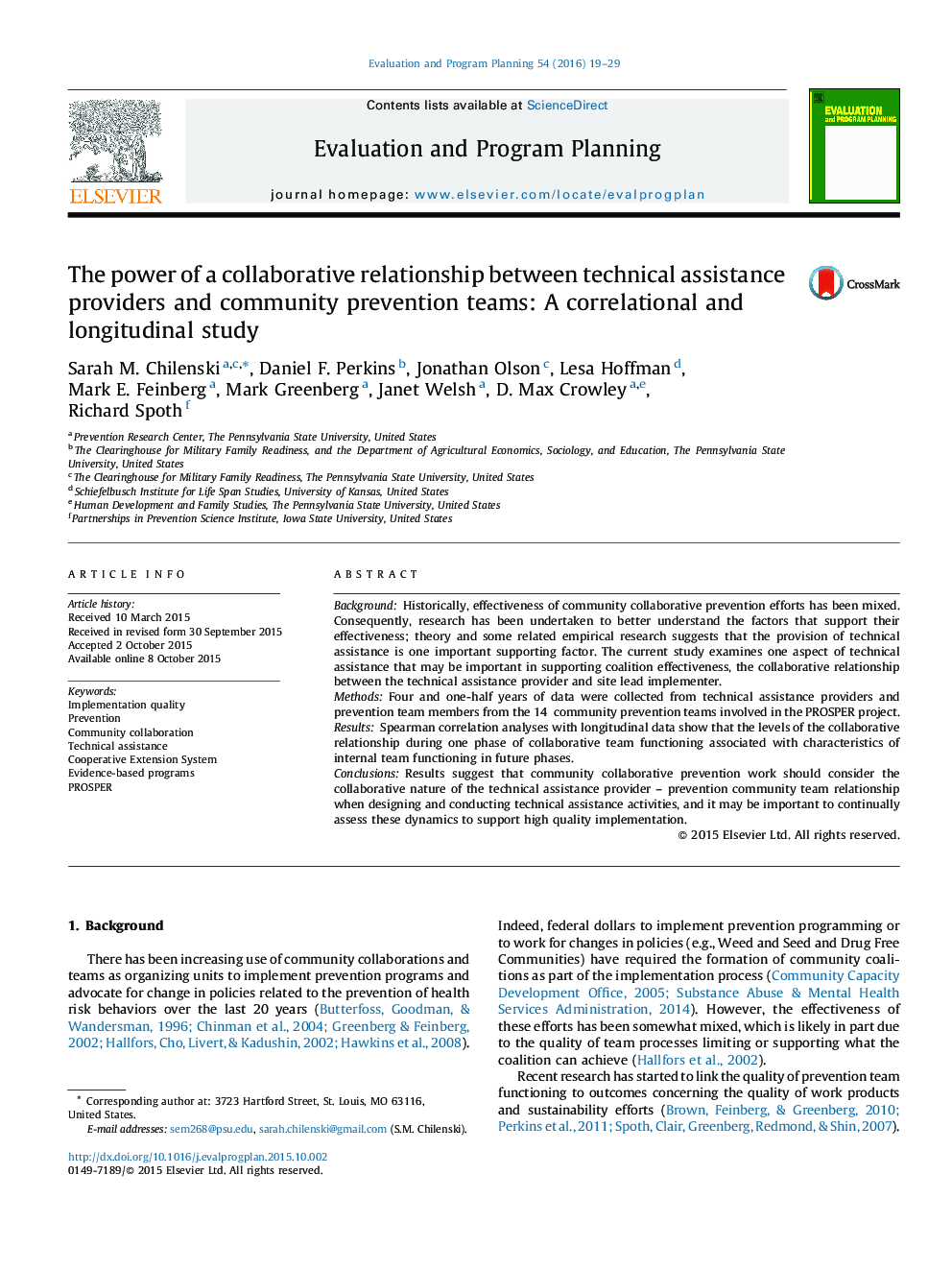| Article ID | Journal | Published Year | Pages | File Type |
|---|---|---|---|---|
| 322438 | Evaluation and Program Planning | 2016 | 11 Pages |
•We examine the relationship between technical assistance providers and community prevention team leaders.•Higher levels of a collaborative relationship relate to better internal team functioning.•This pattern is found in longitudinal analysis.
BackgroundHistorically, effectiveness of community collaborative prevention efforts has been mixed. Consequently, research has been undertaken to better understand the factors that support their effectiveness; theory and some related empirical research suggests that the provision of technical assistance is one important supporting factor. The current study examines one aspect of technical assistance that may be important in supporting coalition effectiveness, the collaborative relationship between the technical assistance provider and site lead implementer.MethodsFour and one-half years of data were collected from technical assistance providers and prevention team members from the 14 community prevention teams involved in the PROSPER project.ResultsSpearman correlation analyses with longitudinal data show that the levels of the collaborative relationship during one phase of collaborative team functioning associated with characteristics of internal team functioning in future phases.ConclusionsResults suggest that community collaborative prevention work should consider the collaborative nature of the technical assistance provider – prevention community team relationship when designing and conducting technical assistance activities, and it may be important to continually assess these dynamics to support high quality implementation.
